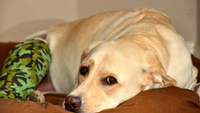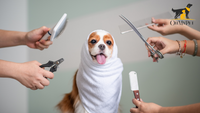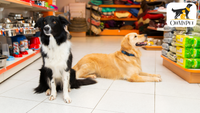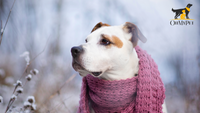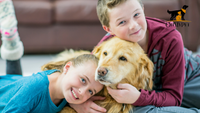Many pet parents struggle to understand what is happening with their dogs, but they must monitor them regularly. A good way to stay on top of your dog's health is to check it at home.
Watch how your dog behaves when he's just hanging out. If you know your dog's "normal," you'll be able to detect subtle changes in his behavior. After that, you may take help from your veterinarian to detect further abnormalities during a pet home checkup.
Here's how to get started.
Eyes:
Look into the eyes when they are naturally open. Make sure they're clear, bright, and have no foreign objects. However, if you see one, don't remove it. You can rinse the eye with saline solution if it's only floating. Occasionally, there may be a transparent or gray discharge. Gently lower the lower lid and then lift the upper lid. It should be pink inside, and there should be no drooping of the eyelids.
Ears:
Ears should be clean. You can barely see regular wax, which is brown/golden. If there are a lot of buildups, you can clean the inside of the ear with damp cotton wool. However, if you need to learn the process, take guidance from your vet. Also, it shouldn't smell, as a nasty odor might mean an infection. The head shouldn't shake, scratch, be sensitive to touch, have inflammation or heat, or have grass seeds.
Teeth:
Make sure they're white and clean, with no brown coloring. Pink gums are good. Pigmentation can be dark, and regular brushing might help. You may learn it from your vet so it's as effective as possible without hurting your pup's gums. Your dog's gum color changes can indicate problems with his circulation and oxygen levels, so be aware.
Feet:
If your dog's feet seem brown, it could be due to excessive licking or inflammation. A pad shouldn't have cracks or calluses. Make sure there aren't any foreign objects between the toes. Unless their nails are naturally worn down by walking on roads/pavements, you should trim them regularly. Also, remember to look at dew claws (dog's thumb) for any uncertain growth.
Body:
The coat shouldn't have much dander (dead skin). Instead, look for lumps, fleas, and ticks on the skin. Summer months and long grass are especially tick-friendly. If your dog starts to scratch, itch, or bite certain body parts, he might react to something
Weight:
Check your dog's shape regularly. You can use the scales. It's also possible to use a tape measure at home (bar at your dog's broadest part). Watch out for weight gain and loss.
Skin:
A major organ of your dog's body, ensure it has soft and unbroken skin with minimal odor. Except for the wire-haired breed's hair, coats should be shiny and smooth.
By doing these regular dog health checks at home, you'll get to know what's normal for your dog so that you can spot any changes quickly. Check these body parts weekly and let your vet know if anything seems off.
Keeping pets healthy also means feeding them right and grooming them. Choose from a wide selection of pet food and grooming products at ohmypet.



